Cafe con leche puerto rico: Puerto Rican Café con Leche
Puerto Rican Café con Leche
Jump to Recipe·Print Recipe
Start the day off right with a warm cup of traditional Puerto Rican café con leche, made with Puerto Rican coffee, sugar and steamed milk. This traditional Latin drink can be found at any given time in panaderías, restaurants and home kitchens across the island.
This post may contain affiliate links; this means if you purchase an item linked, I may receive a small commission at no extra cost to you. Click here to learn more about my disclosure policy.
Café con Leche is one of those drinks that you won’t really need a recipe for once you’ve made it once.
In fact, you’ve likely already made a variation of it in your own kitchen. All it consists of is strong brewed coffee, steamed whole milk and sugar.
If you’re looking for something to serve with your coffee, this flan is one of my favorite desserts to enjoy with my café!
What You’ll Need to Make Puerto Rican Coffee
As mentioned above, the ingredients for this recipe are pretty simple. If you want to take the extra step to make things feel 100% authentic, you can use your favorite Puerto Rican coffee. Today I’m using the brand Yaucono, one my mom and I love.
If you want to take the extra step to make things feel 100% authentic, you can use your favorite Puerto Rican coffee. Today I’m using the brand Yaucono, one my mom and I love.
Here’s what you’ll need to make your café con leche:
- strong, full-bodied coffee (bonus points if it’s Puerto Rican)
- whole milk
- white sugar
See recipe card for exact quantities.
How to Make it
Because the base of this dink is coffe, there are many different ways to make it.
The traditional Puerto Rican method my mom grew up with started with freshly ground coffee and water in a pot on the stove. Once the coffee was sufficiently brewed, it was then strained through a colador (a type of cloth strainer) to strain out all the grounds.
While this method produces really delicious coffee, I know it’s not necessarily the most convenient or the most relevant these days.
For this recipe I recommend brewing your coffee in whatever method you already use at home.
Whether it’s a French press, pour over, Mokapot; they will all get the job done. Just make sure to brew it strong, almost like espresso. I like to use a 1:1 ration with water and coffee.
Today I’m using my Moka pot and steaming the whole milk in a separate saucepan on the stove.
Some Puerto Ricans (like my grandma) will put instant coffee, sugar and milk in a saucepan and simmer it all together until the coffee infuses into the milk; making a super quick version of café con leche!
Once the milk is warm and simmering, it’s time to pour everything into your coffee cups. Start by filling your cups halfway with coffee, then add sugar and mix, and finally add the warm milk.
Just like that, you’ve made a cup of coffee like a Puerto Rican!
Hint: feel free to use white or brown sugar, or omit the sugar completely based on your preference.
What Makes Café con Leche Unique?
Now that you’ve read how to make your café, you may be thinking to yourself “well that was easy”.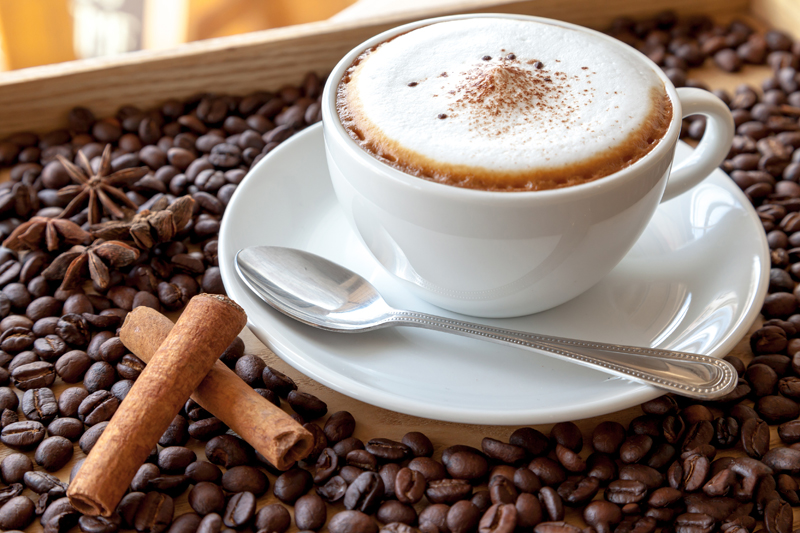 And you’re right! It really is that simple.
And you’re right! It really is that simple.
Similar to many popular American coffee drinks, it’s quite easy to make and requires simple ingredients. That said, there are a few things that make this recipe different from your average cup of Joe.
Let’s compare Café con Leche to other popular drinks:
- Cappuccino – this drink is likely the closest to the Puerto Rican style of making coffee, however a cappuccino uses frothed milk with espresso, instead of steamed.
- Latte – lattes also use frothed milk with espresso, but the ratio of milk to coffee is less proportionate. In general, lattes have much more milk than the Puerto Rican style coffee with milk.
- Black coffee – this one speaks for itself, it’s black coffee with no milk! Plenty of Puerto Ricans love their coffee black, but it’s not considered café con leche 🙂
What to Eat with Your Coffee
You’re officially an expert at making Puerto Rican coffee and you’re on your third cup. It’s probably time to eat something, so let’s talk food pairings!
It’s probably time to eat something, so let’s talk food pairings!
At any Puerto Rican panadería you’re going to be offered a plethora of sweet and savory pastries to enjoy with your coffee, so you’ll be set.
Here are some recipes you can make at home:
- Quesitos – as pictured above, this cream cheese filled pastry is an actual match made in heaven to a warm cup of coffee
- Maduros – these easy-to-make sweet treats are delicious and super quick to fry up. The subtle sweetness makes a great partner for a cup of coffee.
- Tripleta – this sandwich made with 3 kinds of meat is satisfying and hearty. Recipe coming very soon!
- Flan – a classic Puerto Rican dessert that will have you feeling like you’re on the island when paired with classic Puerto Rican coffee.
When all else fails, try a slice of toast with jam and butter. No really, any classic breakfast food is going to be super satisfying with café con leche. You can’t go wrong!
Equipment + Tools
Here are the tools I used to make my coffee:
- Moka pot for brewing the espresso
- Small pot for steaming the milk (this can also be done in a microwave)
If you want to get super traditional and go the colador route, all you’ll need is that and a small pot for brewing the coffee and milk.
Top tip
Whether using a pot or the microwave, make sure you steam your milk before pouring it into the coffee to keep everything warm. No one likes cold milk in warm coffee.
Happy brewing!
Ingredients
Scale
- ½ cup ground coffee
- ½ cup filtered water (for brewing the coffee)
- ½ cup whole milk
- 1 tsp sugar
Instructions
- Brew your coffee according to the instructions on the coffee making device you’re using. See notes for directions if using a saucepan to make your coffee.
- While your coffee brews, add milk to a saucepan over medium heat. Bring to a light simmer before killing the heat.
- Fill your cup with coffee until just halfway full.
 Add sugar and stir with a spoon. Pour steamed milk in to fill the cup. Enjoy!
Add sugar and stir with a spoon. Pour steamed milk in to fill the cup. Enjoy!
Notes
If brewing coffee in a saucepan: add water and bring to a simmer before adding in coffee grounds, simmering together for a minute, killing the heat, allowing it to steep for 2 minutes, then straining through your colador into a large cup. Add brewed coffee, sugar and milk to a clean saucepan and steam until hot. Enjoy!
Keywords: Café con Leche, Puerto Rican Café con Leche
Did you make this recipe?
Tag @salimaskitchen on Instagram and hashtag it #salimaskitchen
About — Cafe Con Leche
A Christian Husband & Wife team dedicated to bringing “La Isla Del Encanto Inland One Dish At A Time!”
how it all began…
Phil and Melodie were both born and raised in NYC with deep roots in Puerto Rico with Parents and Grandparents originating from La Isla.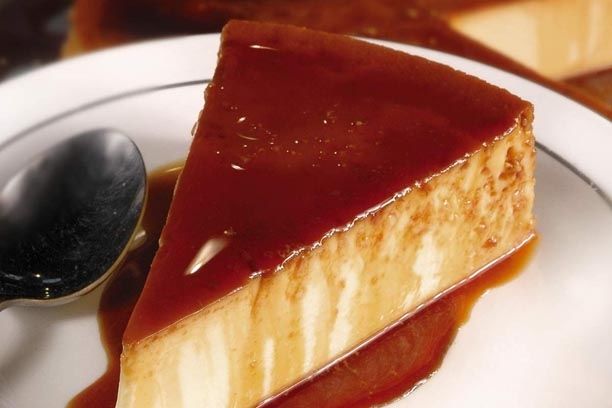 Phil’s maternal grandparents call home to Puerta De Tierra in San Juan as well as Aguas Buenas and his paternal grandparents from Guanica. Melodie’s maternal family call home to Caguas and her paternal family call home to Guayama. A beautiful blend of Caribbean people all with the same passion, hospitality, resilience, character and pride that we call Boriquas.
Phil’s maternal grandparents call home to Puerta De Tierra in San Juan as well as Aguas Buenas and his paternal grandparents from Guanica. Melodie’s maternal family call home to Caguas and her paternal family call home to Guayama. A beautiful blend of Caribbean people all with the same passion, hospitality, resilience, character and pride that we call Boriquas.
Phil (Executive Chef/Owner) grew up in The Bronx and was raised in his younger years by his late Grandmother and Grandfather. Instilling in him the family aspect and culture of Puerto Ricans from la isla del encanto (The island of enchantment). Family means everything to him as his Grandparents were the Matriarch and Patriarch of the family keeping everyone close and in order. They’d spoil their grandchildren and children while teaching them valuable life lessons. Nothing is given but earned and both of them worked hard to provide a future for their family. Abuelo (Grandpa) was a foreman at a lamp/lighting warehouse in Long Island, NY and Abuela (Grandma) was a soldier for Christ and a meat packer / deep freezer worker in the Bronx, NY for many years.
Melodie (Executive Chef/Owner) grew up in Brooklyn and was raised in her younger years by her mom and grandmother. As a kid she played in the streets of Knickerbocker Ave. shortly before moving to Connecticut. Abuela (Grandma) was known for many years as the Limber (Puerto Rican Icee) lady as she lived on the first floor and used to sell these small cups of flavored to Icees to the neighborhood and community. Everyone called her Abuela Risa (Smile) because she’s always smiling and giving the aura of happiness and unity. A culturally spirited definition of what it’s like to be an Abuela from Puerto Rico. Her Mom would later move to Connecticut to raise her in a suburban environment. It is there where she’d learn some of the most valuable life lessons. She’d learn about family, culture and cooking that had been passed down from Abuela Risa.
why cafe con leche?
Growing up Puerto Rican there was always Cafe Con Leche. An espresso coffee made in a colador (colander), coffee kettle mixed with boiled or evaporated milk and extra sugar to give it a sweet candied taste.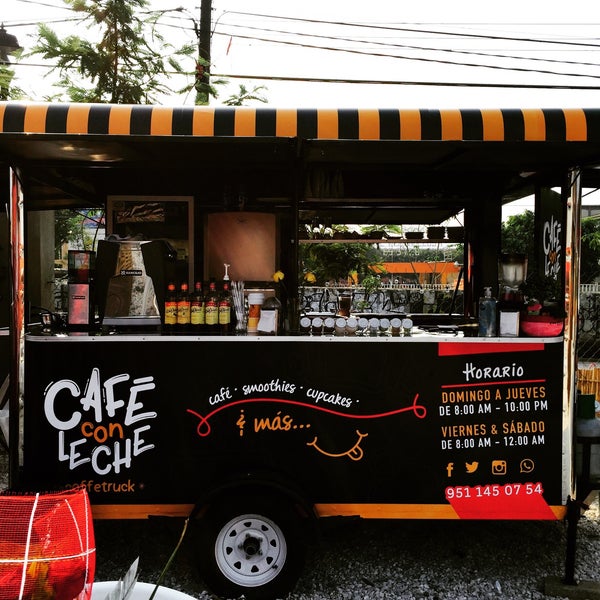 Often served with buttered export soda crackers and queso de papa (sharp cheddar cheese). It’s not so much the drink that made Phil choose this name but the meaning behind it for him. As a kid and throughout life Cafe Con Leche meant more than just coffee to him. A lover of everything coffee related is really less about it’s aromatic smell and taste and more of what it symbolized for him growing up. It became a sense of togetherness, unity, family, fun, holidays, memories and love. Whenever Cafe Con Leche was brewing there was always a fun time to be had, family to come visit, holidays to be celebrated and memories to be made. It is the same atmosphere, culture, togetherness, unity and memories we’re creating here at Cafe Con Leche. We’re giving everyone a chance to experience our culture while allowing those who know it to have a nostalgic feeling of what Cafe Con Leche means to them.
Often served with buttered export soda crackers and queso de papa (sharp cheddar cheese). It’s not so much the drink that made Phil choose this name but the meaning behind it for him. As a kid and throughout life Cafe Con Leche meant more than just coffee to him. A lover of everything coffee related is really less about it’s aromatic smell and taste and more of what it symbolized for him growing up. It became a sense of togetherness, unity, family, fun, holidays, memories and love. Whenever Cafe Con Leche was brewing there was always a fun time to be had, family to come visit, holidays to be celebrated and memories to be made. It is the same atmosphere, culture, togetherness, unity and memories we’re creating here at Cafe Con Leche. We’re giving everyone a chance to experience our culture while allowing those who know it to have a nostalgic feeling of what Cafe Con Leche means to them.
the food:
A blend of both of Phil and Melodie’s parents & grandparents recipes that all tie back directly to La Isla.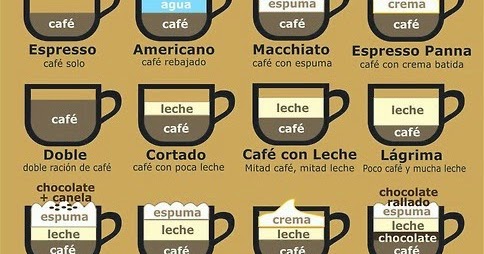 We offer an Authentic Puerto Rican cuisine experience that truly differs from a NewYork Rican restaurant. All of our foods are prepared freshly and we don’t freeze any of our products. We make our own fresh sofrito as the base of all of our meats. We cook with love and passion while never deviating from our recipes. It is what makes us a truly authentic experience. Our food takes time to create because we care and won’t ever take shortcuts. We want you to feel apart of our family so sit back, grab a drink, listen to some salsa, eat some food and enjoy your experience.
We offer an Authentic Puerto Rican cuisine experience that truly differs from a NewYork Rican restaurant. All of our foods are prepared freshly and we don’t freeze any of our products. We make our own fresh sofrito as the base of all of our meats. We cook with love and passion while never deviating from our recipes. It is what makes us a truly authentic experience. Our food takes time to create because we care and won’t ever take shortcuts. We want you to feel apart of our family so sit back, grab a drink, listen to some salsa, eat some food and enjoy your experience.
the bible verse:
“For I know the plans I have for you,’ declares the Lord, ‘plans to prosper you and not to harm you, plans to give you a hope and a future. ‘” – Jeremiah 29:11
A verse that has resonated deep within their lives and has carried them through all of their trials and tribulations. With each location they’re sure to give the glory to God and remind those who enter of how they continue to survive and thrive during some of the most difficult of times. Their faith is what keeps them together and able to continue to provide the amazing atmosphere that is Cafe Con Leche.
Their faith is what keeps them together and able to continue to provide the amazing atmosphere that is Cafe Con Leche.
3 recipes, cooking features ☕
One of the most popular coffee drinks in Spain is café con leche. Its name translates as “coffee with milk” and fully reflects the essence of the drink. The cocktail is a mixture of espresso or black coffee with warmed milk. In many Spanish cafes, these components are not mixed immediately, but hot milk is poured into a cup of coffee until the visitor considers that the drink has acquired the optimal consistency. Sometimes coffee and milk in the cup is equal, sometimes less or more milk is added than the espresso itself. Additionally, cinnamon, whipped cream, sometimes wine, spices, and chocolate are often added to coffee. Coffee con leche can be made sweet or without added sugar. This Spanish coffee cocktail does not have clear rules and proportions, but still the technology of its preparation is subject to several simple rules.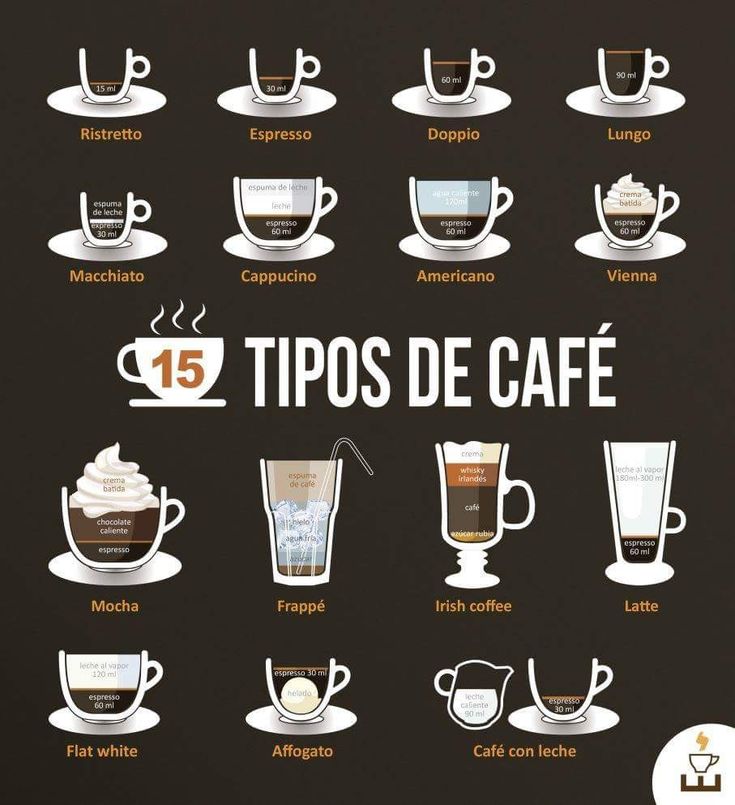 If you want to get a perfect result, you should know about these subtleties in advance. nine0004
If you want to get a perfect result, you should know about these subtleties in advance. nine0004
Cooking features
Making coffee con leche is not a difficult task, and many housewives make it regularly, without even realizing how famous and popular the drink they are brewing. However, to get just such coffee with milk, which is so loved by the inhabitants of Spain and tourists coming here, you will need to know some of the nuances.
- Con leche coffee is not considered strong and is often chosen by people who prefer milder coffee cocktails and those who have to limit their intake of caffeinated foods. However, if the black coffee is made too weak for this cocktail, the unique contrast of bitter espresso and delicate milk is lost. Brewing coffee for this cocktail costs the same strength as usual, or even more. nine0011
- The ideal base for coffee con leche is espresso. If you do not have the equipment for making such drinks at home, you can brew it in a Turk.
 In this case, it is important to bring the drink to a boil 2-3 times, but not let it boil. Before mixing with milk, coffee brewed in a Turk must be filtered, as the coffee sediment can spoil the pleasure of drinking a cocktail.
In this case, it is important to bring the drink to a boil 2-3 times, but not let it boil. Before mixing with milk, coffee brewed in a Turk must be filtered, as the coffee sediment can spoil the pleasure of drinking a cocktail. - Coffee lovers are unanimous that natural, freshly ground coffee powder makes drinks tastier and more aromatic than instant coffee powder. However, the food industry has taken a big step forward, and under some brands an instant powder is sold, from which coffee is obtained almost indistinguishable from natural coffee in its organoleptic qualities. At home, it is allowed to make coffee con leche from concentrate, but only if it is of high quality. nine0011
- Drink can be sweetened. Usually for this, sugar is added to hot coffee before pouring it into cups, or served separately. You can also sweeten with condensed milk or a low-calorie sweetener.
- The most common version of coffee con leche has a minimum of ingredients: coffee, milk, sometimes sugar, cinnamon, but sometimes it is supplemented with cocoa, chocolate, cream, spices and even wine.
 It goes well with a cocktail and cream liqueur.
It goes well with a cocktail and cream liqueur. - Milk can be used in any fat content. Fatty milk allows you to give the cocktail a more expressive taste, low-fat milk makes it less caloric. People who do not consume animal products can use coconut, almond or oat milk to make a cocktail. The taste of the drink will change from this, but remain pleasant. nine0011
The coffee is served more hot. Milk can be immediately mixed with espresso or poured into it when serving a cocktail to the table. Sugar is also put immediately or served separately. The latter option is preferred when the gastronomic preferences of the person who will drink the coffee cocktail are unknown to the barista.
Classic coffee con leche recipe
Ingredients:
- espresso – 60 ml;
- milk – 40–80 ml;
- ground cinnamon – a pinch;
- sugar – to taste. nine0011
Preparation:
- Make an espresso. A combination of 2 teaspoons of ground coffee and 50-60 ml of water will be optimal.

- Mix the drink with a pinch of cinnamon. Cinnamon can be immediately combined with ground coffee, from which espresso is brewed, then the taste of the cocktail will be more harmonious.
- Pour the espresso into a 150-180 ml cup.
- Warm up the milk, pour it into the milk jug.
It remains to pour exactly as much milk into the cup as the person you are serving a coffee milkshake asks for, and offer him a few pieces of sugar. nine0004
Homemade con leche coffee
Ingredients:
- ground or instant coffee – to taste;
- water – 120 ml;
- milk – 120 ml;
- sugar – 10 g;
- cinnamon – 2 sticks.
Preparation:
- Brew coffee in any way you like. Strain it if necessary.
- Mix coffee with sugar.
- Warm up the milk. Beat it with a mixer. Pour into coffee container, leaving foam. Mix coffee with milk. nine0011
- Pour the coffee into cups, spread the foam over them.

Serve with a cinnamon stick in each cup.
An unusual version of coffee con leche with red wine
Ingredients:
- ground coffee – 10 g;
- ground cinnamon – 5 g;
- water – 60 ml;
- red dessert wine – 80 ml;
- full fat milk or cream – 120 ml.
Preparation:
- Mix ground coffee with cinnamon. From the resulting powder, brew black coffee. Strain it if necessary. nine0011
- Heat milk or cream until just barely boiling.
- Pour the black coffee, milk product and wine into a small bowl. Stir gently and pour into cups.
Instead of cinnamon, you can add a pinch of cloves and a little nutmeg.
Coffee con leche, popular in Spain, is a hot coffee and milkshake most often supplemented with sugar and cinnamon. There are several options for preparing this gentle coffee-based drink. nine0004
All rights reserved © 2023 Morecoffee.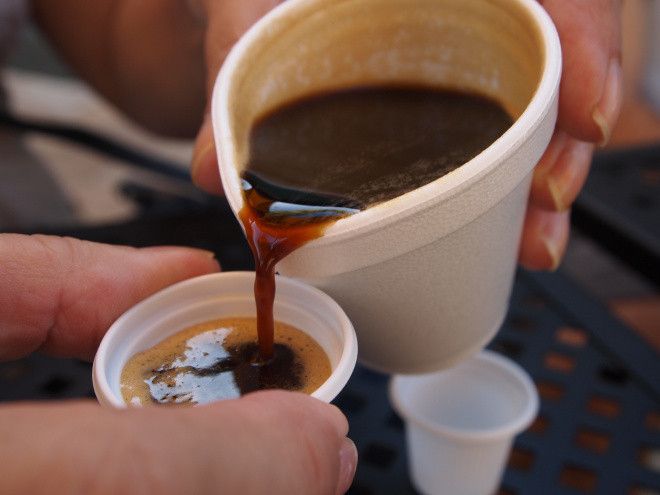 com . Another cup of coffee?
com . Another cup of coffee?
Spanish coffee is a hot and distinctive drink, just like the Spaniards themselves. Due to the prevailing climatic and geographical conditions, the country of the conquistadors is not a producer of coffee beans. Therefore, in order to somehow smooth out this unpleasant moment, the Spaniards became innovators in the field of roasting and packaging of beans, thanks to which quite a few coffee brands in Spain subsequently became known to the whole world. According to experts, the Spaniards have developed a special, reverent attitude towards the invigorating drink (most likely due to the prevailing climatic circumstances): not a single breakfast or lunch in the country is complete without coffee, and instead of dessert, customers often order not something sweet, but a cup of fragrant broth. nine0004 Coffee in Spain: historical background Coffee in Spain appeared with the light hand of Italian merchants during the reign of the Bourbons, that is, in the middle of the eighteenth century. Spanish coffee habits Coffee in Spain is more than just an invigorating drink. This is an integral part of the culture of the country of the conquistadors! Spanish coffee is drunk everywhere, at any time of the day, and most often not at home, but in some cafe. Yes, the Spaniards are avid coffee drinkers! Not quite awake yet, they go into the kitchen and brew their first Spanish coffee. Taking their children to kindergarten or school, or on their way to work, they go to their favorite cafe and enjoy an invigorating drink there. After that, they drink coffee again, since from 10 to 11 am in all Spanish organizations there is a legal break for breakfast and a favorite drink. Coffee shops and bars usually serve a very strong refreshing drink. Moreover, in order for such establishments to make a profit, the owners install the best coffee machines in them. Therefore, even in a simple bar, you can always taste excellent Spanish coffee prepared according to all the rules. The coffee service in Spain varies by region. Walking through the streets of Spanish cities, you will always feel the stunning aroma of luxurious Spanish coffee. There are cafes here literally at every step, so you simply cannot fail to try a wonderful invigorating drink. Even if you are not an avid coffee drinker or do not drink coffee for some reason, coffee aromas will push you to this adventure. Cafes in Spain are more than just cafes! Without exaggeration, we can say that most of the life of the inhabitants of the country of the conquistadors spend in cafes. In Madrid coffee houses, for example, regulars can sit out for half a day talking and drinking Spanish coffee. And they also like to read newspapers here, discuss the latest news and just chat with friends about pressing matters. In a word, not only coffee in Spain, but also coffee houses are a cult phenomenon! nine0004 As far back as the nineteenth century, Spanish coffee houses were considered meeting places for intellectuals, artists, writers, directors and entertainers. It was within these walls that great works, plays, melodies and film ideas were born. In such establishments, as a rule, they smoke a lot and drink Spanish coffee without any pastry accompaniment. Recently, so-called themed cafes have appeared in the country, where gourmets can not only enjoy Spanish coffee, but also buy beans from any country in the world where coffee grows. Most cafes in Madrid are located in the area of Plaza de Santa Ana and Plaza del Dos Mayo. One of the most famous, oldest and favorite places for coffee lovers is Cafe Comercial, opened back in 1887. Throughout its existence, famous people come here to drink Spanish coffee and chat, for example, such as the legendary Spanish director Pedro Almodovar. Spanish coffee If you want to touch the country of the conquistadors, prepare real Spanish coffee for yourself and your friends. It can be the famous cortado, con leche or even carajillo. With him, perhaps, we will begin. nine0004 Carajillo is a luxurious coffee masterpiece that is a delicious mixture of strong Spanish coffee and alcoholic drink. According to one version, he appeared in Barcelona. To enjoy this mix, you need to mix espresso and an alcoholic drink in equal proportions, which can be either aniseed vodka or Spanish brandy. To surprise your loved ones with another drink called con leche (translated as “coffee with milk”), you will need two cups of hot milk, a tablespoon of sugar, two cups of hot strong espresso and four small cinnamon sticks. First you need to mix Spanish coffee, sugar and milk, and then pour the mixture into preheated mugs, after which put a cinnamon stick in each of them. Spaniards usually drink con leche with biscuits or small buns. For the Spanish cortado, mix espresso and milk in a ratio of 1:1. Such a drink is usually served in glasses with a volume of 150 ml -200 ml. Torrefacto roasting – Spanish pride For more than seventy years, Spanish coffee lovers have been drinking a rather unusual invigorating drink called torrefacto (torrefacto). They began to produce similar coffee in Spain during the civil war, when the fragrant decoction was in great short supply. The poor gourmets were forced to somehow get out of the situation. They had to look for more economical solutions to the problem and a more economical way to make Spanish coffee. By trial and error, gourmets came to the conclusion that the most successful opportunity to consume less Spanish coffee and at the same time fully preserve the taste and aroma of an invigorating drink is torrefacto roasting. nine0004 Torrefacto is an unusual way of roasting Spanish coffee with added sugar. Since the roasting temperature is 200°C and the sugar melts, the coffee beans caramelize, after which they become glossy and acquire a characteristic caramel flavor. |
 Add sugar and stir with a spoon. Pour steamed milk in to fill the cup. Enjoy!
Add sugar and stir with a spoon. Pour steamed milk in to fill the cup. Enjoy!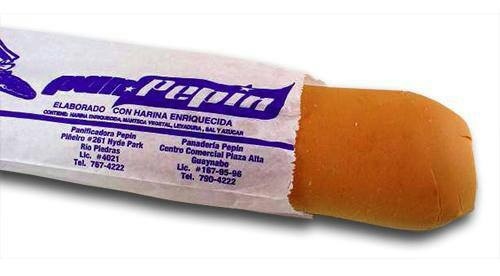 In this case, it is important to bring the drink to a boil 2-3 times, but not let it boil. Before mixing with milk, coffee brewed in a Turk must be filtered, as the coffee sediment can spoil the pleasure of drinking a cocktail.
In this case, it is important to bring the drink to a boil 2-3 times, but not let it boil. Before mixing with milk, coffee brewed in a Turk must be filtered, as the coffee sediment can spoil the pleasure of drinking a cocktail.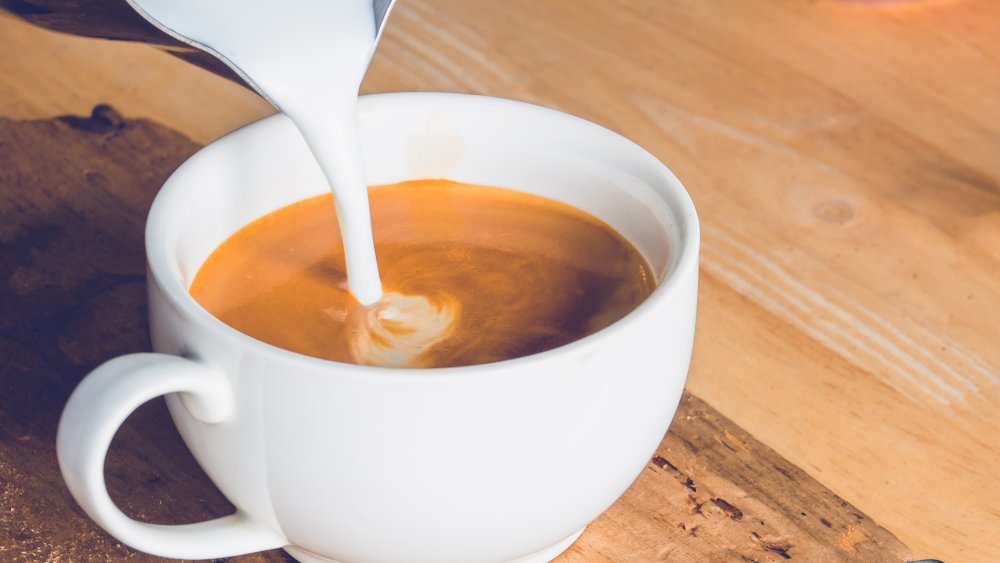 It goes well with a cocktail and cream liqueur.
It goes well with a cocktail and cream liqueur.

 It is said that none other than His Majesty King Philip V, the founder of the aforementioned Spanish Bourbon dynasty, carried the precious coffee beans with him in his luggage. The first coffee houses where you could taste great Spanish coffee appeared in Madrid. At that time, these were more small eateries – casas de comidas – where you could have a good meal, chat with friends and taste the then still outlandish drink. nine0004
It is said that none other than His Majesty King Philip V, the founder of the aforementioned Spanish Bourbon dynasty, carried the precious coffee beans with him in his luggage. The first coffee houses where you could taste great Spanish coffee appeared in Madrid. At that time, these were more small eateries – casas de comidas – where you could have a good meal, chat with friends and taste the then still outlandish drink. nine0004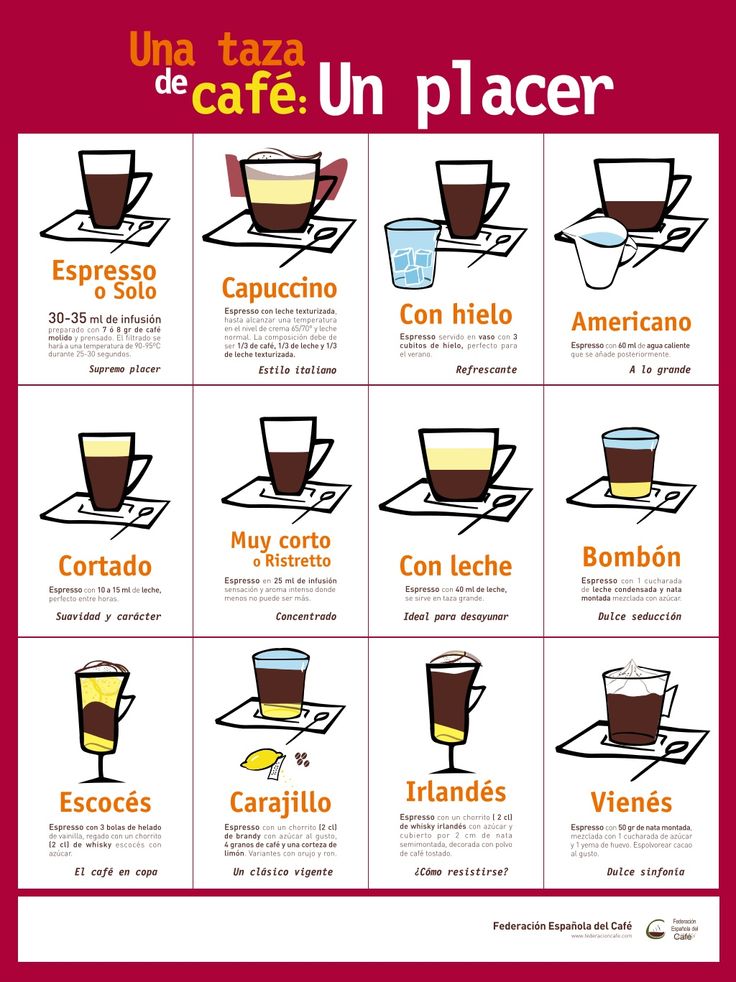 “Calling the office in the morning is useless, because all the employees eat Spanish coffee, and no one will answer the call!” – the “office conquistadors” joke about this. As a rule, Spaniards start their day with coffee with milk, and from lunch until the evening they enjoy strong espresso at a table of some street cafe. In the afternoon, after a hearty meal, caballeros drink an invigorating drink without milk, for an afternoon snack – usually a latte or cappuccino. After a tasty and satisfying dinner, at nine or ten o’clock, the inhabitants of the country again taste Spanish coffee, this time not so strong – Leche manchada, for example. nine0004
“Calling the office in the morning is useless, because all the employees eat Spanish coffee, and no one will answer the call!” – the “office conquistadors” joke about this. As a rule, Spaniards start their day with coffee with milk, and from lunch until the evening they enjoy strong espresso at a table of some street cafe. In the afternoon, after a hearty meal, caballeros drink an invigorating drink without milk, for an afternoon snack – usually a latte or cappuccino. After a tasty and satisfying dinner, at nine or ten o’clock, the inhabitants of the country again taste Spanish coffee, this time not so strong – Leche manchada, for example. nine0004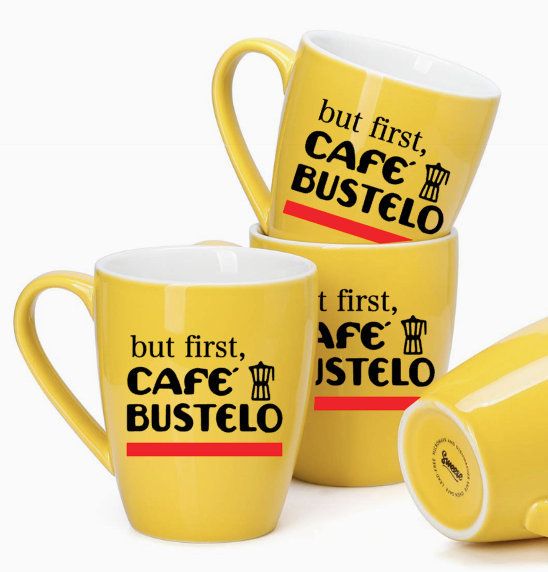 In Valencia and Catalonia, coffee is not much different from European standards, but in Andalusia things are much more interesting. They drink Spanish coffee not only with milk, but also with alcohol. An invigorating drink is served not in the usual cups, but in glass cups. Therefore, tourists out of habit always burn their fingers. However, this approach is not at all a whim of the Spaniards. The fact is that in Andalusia there are eight varieties of coffee with milk, and all of them differ from each other in the ratio of milk to fragrant broth, and, consequently, in the coffee shade, which the Spaniards advise admiring through a transparent glass. nine0004
In Valencia and Catalonia, coffee is not much different from European standards, but in Andalusia things are much more interesting. They drink Spanish coffee not only with milk, but also with alcohol. An invigorating drink is served not in the usual cups, but in glass cups. Therefore, tourists out of habit always burn their fingers. However, this approach is not at all a whim of the Spaniards. The fact is that in Andalusia there are eight varieties of coffee with milk, and all of them differ from each other in the ratio of milk to fragrant broth, and, consequently, in the coffee shade, which the Spaniards advise admiring through a transparent glass. nine0004
 This innovation is very convenient, now everyone has a unique opportunity to prepare their favorite drink at home. nine0004
This innovation is very convenient, now everyone has a unique opportunity to prepare their favorite drink at home. nine0004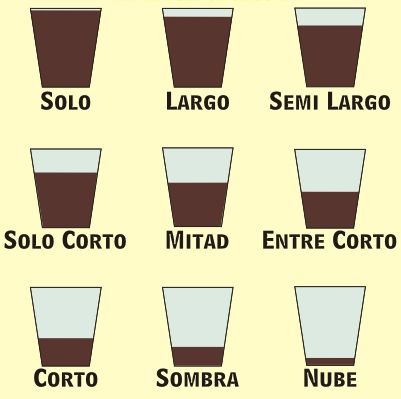 By the way, the ratios of the components depend on the area in which this masterpiece is made: in Leon and Castile, the percentage of coffee in the drink is higher than alcohol, and vice versa in Catalonia. By the way, the name of a coffee drink also depends on the alcohol itself, which is added to Spanish coffee: if you pour grape vodka into a cocktail as a strong component, then your masterpiece will no longer be called carajillo, but quemada. nine0004
By the way, the ratios of the components depend on the area in which this masterpiece is made: in Leon and Castile, the percentage of coffee in the drink is higher than alcohol, and vice versa in Catalonia. By the way, the name of a coffee drink also depends on the alcohol itself, which is added to Spanish coffee: if you pour grape vodka into a cocktail as a strong component, then your masterpiece will no longer be called carajillo, but quemada. nine0004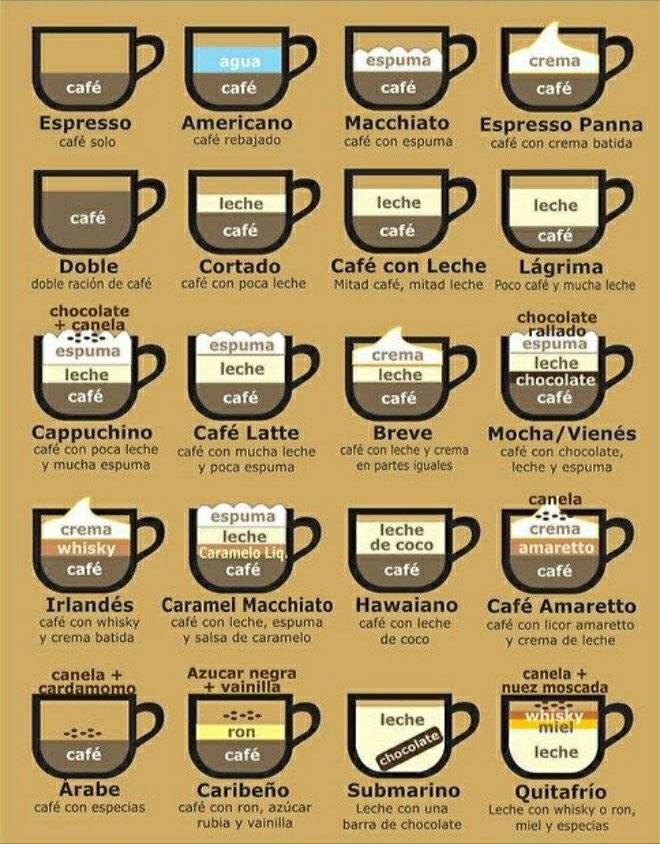 Often Spanish gourmets add whipped cream or condensed milk to it. nine0004
Often Spanish gourmets add whipped cream or condensed milk to it. nine0004